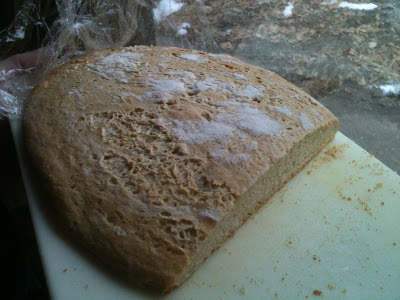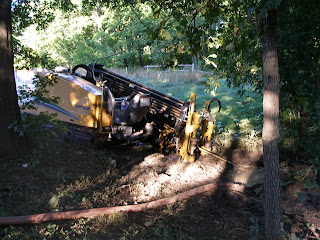Super Insulating is just doing what should have been done.
 Sources and Sinks. That is what we have to watch when optimizing our energy use. I would rather have radiant heat, but that conversion is unjustified in cost. Better to use what we have and increase its efficiency. The source is geothermal ground source heat. The sink is the outer walls, windows. air leaks and vents. Once past there the resource is out of reach and has to be replaced. Our goal is to keep using the resource as long as possible. slowing it down, catching it, storing it, and using less in the process. Insulating our home reduces the loss to the sink. The earth is like a vacuum, wanting to balance the energy. We want to keep the heat inside. All we can do is slow it down because the air needs to move and we cannot live in a plastic bag.
Sources and Sinks. That is what we have to watch when optimizing our energy use. I would rather have radiant heat, but that conversion is unjustified in cost. Better to use what we have and increase its efficiency. The source is geothermal ground source heat. The sink is the outer walls, windows. air leaks and vents. Once past there the resource is out of reach and has to be replaced. Our goal is to keep using the resource as long as possible. slowing it down, catching it, storing it, and using less in the process. Insulating our home reduces the loss to the sink. The earth is like a vacuum, wanting to balance the energy. We want to keep the heat inside. All we can do is slow it down because the air needs to move and we cannot live in a plastic bag. 
 We had a heat loss of 6 degrees from the heat pump to the floor vent. The metal duct was radiating our heat to the crawl space, an area I do not want to heat. Pink wall insulation went in a year ago after the heat pump was installed. I wanted to also stop heat gain in this unoccupied area and used recycled flex duct from a commercial remodeling project. It slid right over our 6 inch heat ducts. Incredibly easy. The heat out the vent increased 4 degrees in my unscientific tests. I think duct work should be insulated during construction. Probably cheaper and better done.
We had a heat loss of 6 degrees from the heat pump to the floor vent. The metal duct was radiating our heat to the crawl space, an area I do not want to heat. Pink wall insulation went in a year ago after the heat pump was installed. I wanted to also stop heat gain in this unoccupied area and used recycled flex duct from a commercial remodeling project. It slid right over our 6 inch heat ducts. Incredibly easy. The heat out the vent increased 4 degrees in my unscientific tests. I think duct work should be insulated during construction. Probably cheaper and better done. I also used insulating duct blankets from the home store. This could be any insulation that is foil backed and wraps the duct. One layer topped the square duct work and I aluminum taped the sides on to complete the wrap. Working alone this took most of the day. The fastest part was sliding the insulated flex duct over the existing 6 inch supply duct. I did not insulate the cold air returns. Most of those are in the joists. They could be closed off with a stapled roll of backed insulation.
Th will be a continuous task as I find more material and have time to work on it. Great results as it decreased the vent heat loss by 75%.


Comments